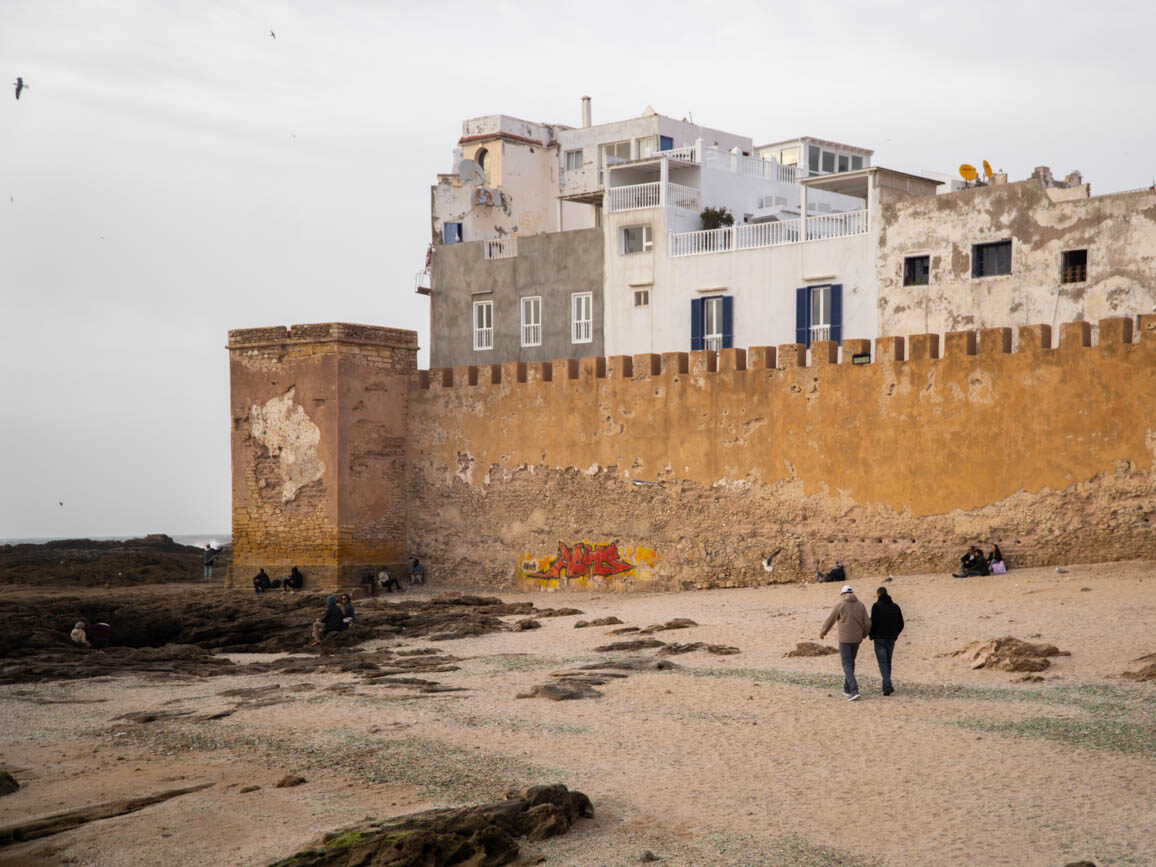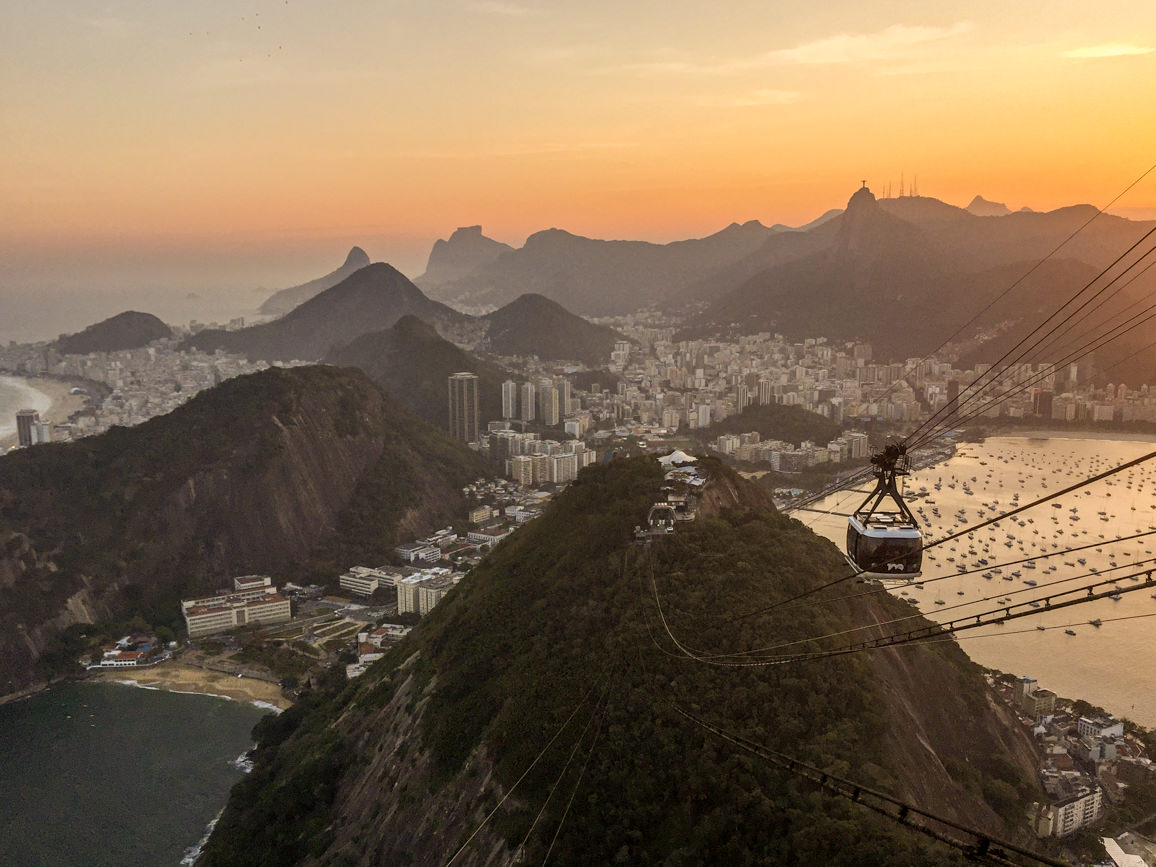
9 things to do in Rio de Janeiro: the ultimate travel guide & map
As one of the largest cities in Brazil, Rio is a lively coastal metropolis with friendly locals, featuring at the same time colonial heritage next to modern architecture, top attractions such as Christ the Redeemer or the Sugarloaf Mountain, idyllic beaches like Copacabana and Ipanema and a delicious food scene. Discover the top 9 things to do in Rio de Janeiro in this travel guide, from what to visit, to where to stay and eat. Towards the end of this post, you will find a map that will help you easily locate all the places mentioned here. Enjoy the read!
***
***
This Rio travel guide is very extensive, so feel free to jump to the section that you find more relevant to start planning your trip right away!
Also, note that throughout the trip, I used this Rio de Janeiro travel guidebook by Lonely Planet to plan our stay and make the most out of it. I hope you’ll find it helpful too!
Basic facts about Rio de Janeiro
Where is Rio de Janeiro?
Located in southeastern Brazil, the coastal city of Rio de Janeiro (also simply known as Rio or Cidade Maravilhosa) faces the Atlantic Ocean.
On January 1, 1502, the Portuguese explorer Gaspar de Lemos arrived at Guanabara Bay (Baía de Guanabara) and mistook it for the mouth of a river, calling the city ‘the January River’ or Rio de Janeiro. Rio became the capital of Brazil until Brasilia replaced it in 1860.
Housing almost 14 million inhabitants referred to as ‘cariocas‘, locals from Rio are well known for being friendly, cheerful, warm-hearted, and devoted to music and fun. The famous celebrations of Carnival or New Year’s Eve are a clear example of that.

Best time to visit Rio de Janeiro
Wondering what the weather is like in Rio to plan your trip? Note that the city of Rio is humid and warm from November to February and dry and sunny the rest of the year. As a good local friend would say, in Rio de Janeiro you will find two types of weather: hot or very hot. 🙂
Rio is located in the Southern Hemisphere. Even though we visited during their winter in August, it felt like summer as the weather was very pleasant. Rio’s average temperature is around 27ºC (80ºF) most of the year!
Regarding your clothes, I would suggest you pack clothes for temperatures that range between 15 and 35°C. You may want to bring a sweater when visiting natural parks.
The busiest times are in December for New Year’s Eve and around February or March for the colorful Carnival. Try to book your flights and accommodation as soon as possible if you’re traveling to Rio around that time!
Do you like my content? Subscribe to my newsletter to stay tuned.
Is Rio de Janeiro safe?
Petty crime and robberies are rather frequent in Rio de Janeiro. That’s why you should be careful and watch your belonging at all times.
Here are some tips to help you stay safe:
- Avoid wearing sumptuous clothing and accessories such as watches or jewelry.
- Always bring a copy of your passport and credit card in case they get stolen.
- Public transport and beaches are very popular among thiefs. When taking the bus or the metro, carry your credit cards, cash and other valuables in a zippered wallet. If you’re hitting the idyllic beaches in Rio, take the bare minimum with you, don’t leave your personal belongings unattended and be alert, especially if there are many people. As a matter of fact, even though my friends and I were taking turns in Ipanema to bathe on the beach, one of our backpacks was stolen and we didn’t even notice!
- Long walks at night, particularly after 8PM, should be avoided. Take a taxi even for a few meters, and if you find yourself in an area with no taxi stops, head to the nearest hotel, bar or restaurant and ask them to call a taxi. In general, Brazilians are very attentive and well aware of the security situation.
- Don’t visit any slums (‘favelas‘) unless you’re with a guided tour. Ideally, these organized group visits would contribute part of their income to the local community.
- It is preferable to use ATMs in shopping centers and supermarkets than those on the street. In any case, don’t take along more cash than you need since most restaurants and stores accept credit cards.
- Note that in Rio you will find several police forces: the Federal Police for passports, Military Police for public security and traffic, Tourist Police to help out tourists, Civil Police for serious crimes, and the Municipal Guard for the parks and beaches. As soon as I landed at the airport in Rio, I actually noticed a heavy military and police presence, which remained constant during the rest of my stay, probably due to the Summer Olympic Games that were taking place. If you’re the victim of a robbery, don’t confront the assailants. Crimes must be reported to the police immediately at a police station (delegacia).
- This being said, we didn’t feel threatened while we were in Rio and I actually walked around completely on my own for a couple of afternoons. As a woman traveling solo in Rio de Janeiro, I suggest you play it safe by using your judgement, hence avoiding deserted and poorly lit areas. Travel with larger groups where you can, for example by booking a free walking tour.
- When it comes to health, check with your doctor and get your vaccines before traveling to Brazil. For extra peace of mind, make sure that you also purchase good travel insurance to avoid any unpleasant surprises during your trip (you can actually calculate how much you would pay with the SafetyWing widget below). When we visited, the country was under high alert due to the zika virus.
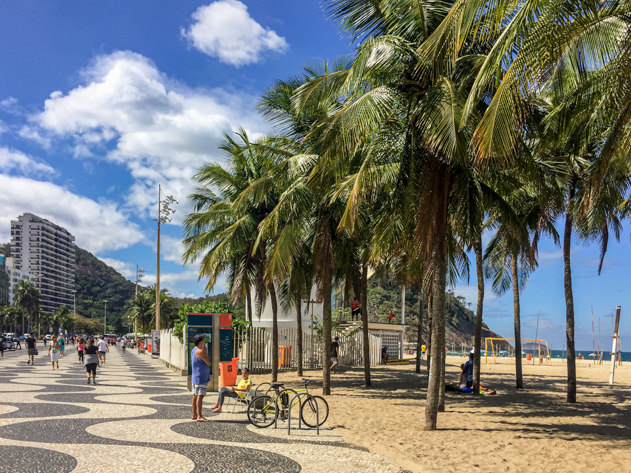
Top 9 attractions and things to do in Rio de Janeiro
From trendy Leblon, to the bohemian districts of Lapa and Santa Teresa, Rio de Janeiro is a city made up of distinct neighborhoods, each one with its own character and most of them featuring magnificent views of the Guanabara bay or the Atlantic Ocean.
The city of Rio can be divided into three main districts:
- Zona Norte: kilometers of the so-called favelas cover this northern area.
- Zona Sul: it encompasses elegant neighborhoods and famous beaches such as Ipanema and Copacabana.
- Centro: the Old Town and main financial district is where most historical buildings, churches and museums are concentrated.
Ready to discover what to see in this wonderful city? These are the top 9 things to do in Rio de Janeiro:
- Take the cable car to Sugarloaf Mountain
- Soak up the views from Tijuca National Park & Christ the Redeemer
- Step back in time around the Old Town
- Explore the bohemian neighborhoods of Lapa and Santa Teresa
- Hit the idyllic beaches
- Discover Lagoa, Jardim Botânico and Gávea
- Enjoy Brazilian football in Maracanã
- Experience the famous Carnival of Rio de Janeiro
- Go on a guided tour to a favela
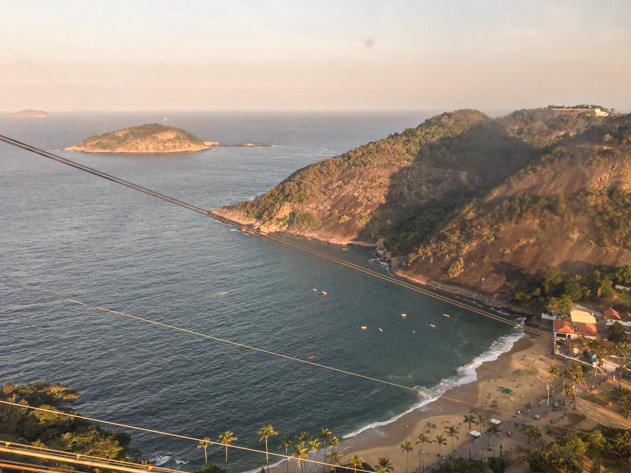
Take the cable car to Sugarloaf Mountain
Exploring this impressive granite monolith of almost 400 meters high is definitely one of the top things to do in Rio de Janeiro. Rising above the ocean and the bay, the panoramic views from up there are truly breathtaking, especially at sunrise or sunset. You can access the iconic Sugarloaf Mountain (Pão de Açúcar) by taking a cable car called bondinho leaving from Parque Bondinho Pão de Açúcar next to Praia Vermelha. On your way to the summit, you will first stop at Morro da Urca before continuing all the way to Morro Pão de Açúcar.
This popular tourist destination was named for its resemblance to a conical block of sugar. It was actually featured in the James Bond movie Moonraker.
In case you don’t feel like taking the cable car, you can also walk along the Pista Cláudio Coutinho. Depending on your pace and fitness level, the hike can take you between 1.5 and 2.5 hours. While you’re ascending through the forest you’ll find various viewpoints and you might come across incredible wildlife and flora such as colorful birds and orchids.
Alternatively, you could enjoy a scenic helicopter ride with Helisight or even climb if you’re adventurous enough!!

Soak up the views from Tijuca National Park & Christ the Redeemer
While we were in Rio for the Summer Olympics, we visited this impressive park during a cycling competition. This 39km2 slice of paradise is one of the largest urban rainforests in the world, housing abundant flora and wildlife (we saw mischievous macaques!), waterfalls (such as Cascatinha do Taunay) and diverse bioclimatic landscapes. Parque Nacional da Tijuca includes the lush Tijuca Forest, the spectacular Serra da Carioca, the impressive monolith of Pedra da Gávea and the famous statue of Christ the Redeemer. Make sure to also check out Vista Chinesa, a Chinese-style pavilion with incredible views of the city.
Entrance to the park is free, although you may want to book a guided tour for a more in-depth experience.
At 706 meters high, the iconic statue of Christ the Redeemer (Cristo Redentor) with its open arms watches over the city of Rio de Janeiro from the top of the Corcovado Mountain (Morro do Corcovado), literally meaning hunchback. Inaugurated in 1931, this art déco statue has quickly become the symbol of Brazil and portrays the country’s welcoming spirit. It was voted one of the Seven Wonders of the Modern World in 2007.
There are various ways to get to Christ the Redeemer:
- Walk or hike through the charming streets of the Cosme Velho neighborhood and the beautiful Tijuca National Park.
- Hop aboard this cable railway (Trem do Corcovado) inaugurated in 1884. Near the station in Cosme Velho you will find a museum (Espaço Cultural Trem Corcovado) explaining the history of the cable car and the statue.
- Take a helicopter ride with Helisight for a unique experience and memorable panoramic flight.
Once you’re reach the famous statue of Christ the Redeemer, you will find a chapel at its base.
If possible, plan your visit early in the morning or late in the afternoon to enjoy epic views from the various vantage points. Believe me this is certainly a postcard you will cherish forever!

Step back in time around the Old Town
The bustling city center known as Centro hosts vestiges of Rio de Janeiro’s majestic past, with colonial buildings intermingling with Baroque palaces and churches, as well as museums and art galleries.
The top attractions in this area include:
- Praça XV de Novembro: this square was Rio’s central point in colonial times and is surrounded by one of the city’s largest concentrations of historic buildings dating prior to the 20th century. Should you wish to explore Niterói on the other side of the Guanabara bay, you can head to the ferry dock located in Praça Quinze de Novembro.
- Mosteiro de São Bento: this magnificent monastery was founded in 1590 by Benedictine monks and is still active nowadays with daily masses and a Gregorian singing service on Sunday mornings. Its opulent Baroque interior is remarkable.
- Museu Histórico Nacional: this museum traces the history of Brazil from prehistoric times with replicas of the rock paintings of the Capibara Mountains to the dawn of the Republic.
- Museu Nacional de Belas Artes (MNBA): inspired by the Louvre in Paris, the most important art museum in the country shows Brazilian works from the colonial era to the end of the 20th century as well as paintings by international masters such as Debret and Rodin.
- Other nearby attractions worth mentioning include various religious buildings (Igreja Matriz da Nossa Senhora da Candelária, Convento de Santo Antônio, Catedral Metropolitana de São Sebastião, Igreja de Nossa Senhora da Lapa dos Mercadores), a splendid library (Real Gabinete Português de Leitura), the ornate Theatro Municipal do Rio de Janeiro, the former Imperial Palace (Paço Imperial), political institutions such as the Legislative Assembly of the state of Rio de Janeiro housed in the Palacio Tirádentes or the Rio de Janeiro City Council sitting in Palácio Pedro Ernesto, and finally the pedestrian street Travessa do Comércio flanked by bars and restaurants.
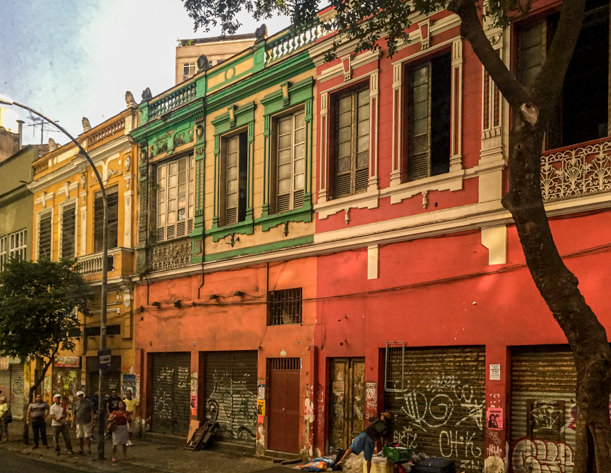
Explore the bohemian neighborhoods of Lapa and Santa Teresa
The districts of Lapa and Santa Teresa are next to each other. While Santa Teresa is located on top of a hill overlooking Rio, Lapa lies at its base.
A great way to discover both of them is to hop on the yellow trams (bondinho Santa Teresa) or to go up the colorful stairway known as Escadaria do Selarón connecting Santa Teresa to Lapa.
On the one hand, Santa Teresa encompasses a charming architecture along its cobblestone streets. The main highlights here include the convent giving its name to the neighborhood (Carmelo de Santa Teresa) as well as two squares or praças, namely Largo das Neves and Largo dos Guimarães.
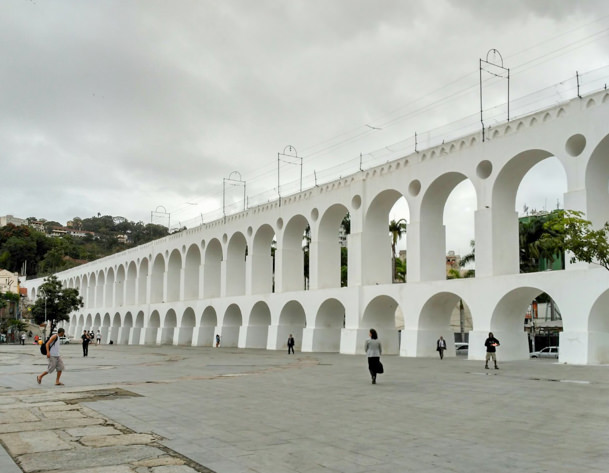
On the other hand, the district of Lapa is the place to go for fun and nightlife. This area that once housed people in need in its ruined colonial buildings, transformed into a lively neighborhood at the end of the 90s. Make sure to check out the following bars and music halls to enjoy live Brazilian music at its best: Circo Voador, Rio Scenarium, Carioca da Gema and Dama da Noite. The iconic arches (Arcos da Lapa) were built as an aqueduct in 1724 and are currently a popular location for street parties.
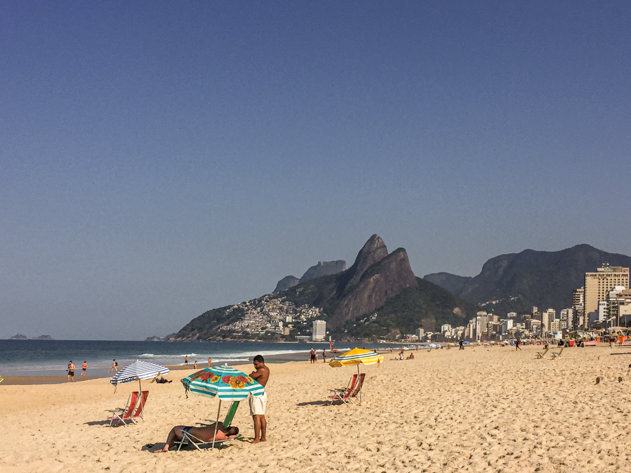
Hit the idyllic beaches
When mentioning Rio de Janeiro, I’m pretty sure that its beaches (known as praias in Portuguese) lined with palm trees are one of the first things that come to mind. And for a good reason!
Note that the beaches in Rio aren’t precisely quiet because of the street vendors roaming all day long offering pretty much anything from fresh drinks such as caipirinhas to food, flip flops or massages. You will also find many people practicing sports such as surf, football or beach volley. During the Summer Olympic Games, we actually saw some beach volley matches in Copacabana beach!

Also, watch out your belongings, don’t leave them unattended and avoid walking by the beach by night. Busy beaches are very popular among thieves! Furthermore, be careful when swimming as currents can be quite strong.
Looking for the best beach in Rio de Janeiro? With plenty to choose from, let’s find out about some of the most popular beaches in Rio:
- Praia de Copacabana: this is probably one of the most famous urban beaches in the world, and its name actually originates from the Bolivian city of Copacabana by the Titicaca lake. Stretching 4 kilometers from Morro do Leme to the north all the way to Arpoador in the southwest, this beach is well known for its New Year’s Eve celebrations (Reveillon). Avenida Atlântica, with its undulating black and white mosaic boardwalk, borders the entire beach and is surrounded by popular beach bars with live music. Along this avenue you will find the elegant Copacabana Palace hotel and two forts (Forte Duque de Caxias, Forte de Copacabana). Copacabana beach and the Leme beach next to it are divided into sections (postos). Head to section 7 to buy the freshest fish. You’ll recognize the local fishermen thanks to their colorful boats lining in the sand.
- Praia de Ipanema: Ipanema beach became popular around the world in the 1960s thanks to the famous song ‘The Girl from Ipanema’ written by Vinícius de Moraes and Antônio Carlos Jobim (listen to my Brazilian playlist on Spotify!). Located south of Copacabana, Ipanema beach is 1.5km long. Remember to watch your belongings at all times, because while my friends and I were enjoying our time at Ipanema beach, one of our bags was stolen and we didn’t even notice until later! The trendy Ipanema neighborhood behind the beach is dotted with boutiques, bars, restaurants and nightclubs, with the most prestigious streets being Avenida Vieira Souto and Rúa Visconde de Pirajá. On Sundays, you can explore the street market (Feira Hippie de Ipanema) in Praça General Osório.
- Praia do Arpoador: next to Ipanema, this beach is popular among surfers. While we were sunbathing there, we actually saw the Olympic Torch relay pass by!
- Praia de Leblon: also located south of Copacabana, this beach is considered more modern and attractive than Ipanema. Note that in the beaches of Ipanema and Leblon, the usual outfit for women consists of a thong and a body wrap known as canga. Men typically wear a beach slip referred to as sunga and flip flops (havaianas). The exclusive neighborhood of Leblon is especially popular among tourists visiting Rio de Janeiro thanks to its safe beach, glamorous boutiques and restaurants.
- Praia de Botafogo: this was my least favorite beach in Rio compared to the previous ones that I mentioned, but it featured stunning views of the Sugarloaf Mountain!
Discover Lagoa, Jardim Botânico and Gávea
Located behind the popular beaches of Ipanema and Leblon, these prosperous upper-middle class neighborhoods are the favorite areas where wealthy and modern cariocas live and enjoy in the evening.
Lagoa Rodrigo de Freitas, also simply known as Lagoa, is located at the foot of Mount Corcovado. The circular pathway around the lake is about eight kilometers long and is popular among runners and bikers. You can rent bicycles, kayaks or pedal boats to explore the lake. Lagoa is also bordered by restaurants, bars and several sports clubs, ranging from football and horse riding to rowing. On the right hand side of the lake you will find the beautiful Parque da Catacumba dotted with sculptures, Parque do Cantagalo and Parque Lage.
The Botanical Garden of Rio (Jardim Botânico) was founded in 1808 by Prince Regent Dom João VI in 1800 and opened to the public in 1822. It currently comprises 137 hectares of natural tropical forest and is home to numerous species of plants, birds and other animals. However its top attraction are the 200 imperial palm trees lining along the main avenues. This is a great spot to take a selfie! The arboretum located near the Botanical Garden (Horto Florestal) houses more than 500 varieties of tropical trees.
From Thursday to Sunday evening, you will see plenty of fashionable local cariocas in the district of Baixo Gávea. The nightlife in the botecos and bars is especially intense around the Praça Santos Dumont.
Enjoy Brazilian football in Maracanã
Football resembles a religion in Brazil, and Rio is a paradise for football fans.
Inaugurated in 1950, the famous Maracanã stadium with a capacity for over 78,000 people has hosted some of the best soccer matches, concerts and major events such as the opening and closing ceremonies during the Summer Olympic Games of Rio 2016. You can also book a guided tour or even better, buy tickets to experience the enthusiastic atmosphere of a match in person.
The four most important clubs in Rio de Janeiro are Flamengo, Fluminense, Vasco da Gama and Botafogo. It is worth seeing a derby between Rio – São Paulo or an international match. Some legends of Brazilian football include Pelé, Garrincha, Zico or Ronaldo.
Currently, beach soccer and futvolei, which is similar to volleyball, are popular sports on the beaches of Rio.
Experience the famous Carnival of Rio de Janeiro
Carnival takes place yearly at the beginning of Lent, around February or March.
The colorful Carnival of Rio is the most famous in the world thanks to its energy, passion, and catchy rhythm of samba music. If you want to experience it first-hand, make sure to buy tickets in advance!
The parades or blocos are held at the Sambódromo stadium, designed by the renowned Brazilian architect Oscar Niemeyer and inaugurated in 1984. On the first Sunday and Monday of Carnival the best samba schools such as Portela, Mangueira or Império Serrano parade through the Sambódromo competing for the title of champion. The Winners’ Parade takes place on the last Saturday of Carnival. It is easier to get tickets for this than for previous performances during the carnival. There are also various dances and blocos around the entire city.
In addition to the competition in the Sambódromo, you can also enjoy free Carnival parades throughout Rio’s neighborhoods. Some good examples include Bloco Cacique de Ramos, Banda de Carmen Miranda, Bloco de Segunda, Banda de Ipanema or Bloco Santa Teresa.
Furthermore, fancy clubs and hotels organize Carnival balls such as Baile do Copa at the Copacabana Palace, Baile Vermelho e Preto do Flamengo or Gala Gay.
In 2005, a large complex known as Samba City (Cidade do Samba) was built for the main samba schools to assemble their floats and prepare their elaborate costumes.
Go on a guided tour to a favela
The slums of Rio known as favelas are part of the city’s landscape. Some of the largest communities include Rocinha, Pavão, Cantagalo, Vidigal, or Chapéu Mangueira. Unfortunately, many locals with low-paying jobs live in these poor residential areas. Even if most people in the favelas respect the law, violence from gangs and drug lords is common here, deriving in a high rate of crime. That is why it is highly advisable to visit the favelas as part of a guided tour or operator who contributes to the local community. Don’t venture on your own!
Nevertheless, the favelas have an important cultural legacy as the birthplace of samba, football and Carnival.
Exploring the favelas is one of the top things tourists do when visiting Rio de Janeiro. Although I’m certain it must be an eye-opening experience to the way of life of Rio’s less privileged inhabitants, I consider it somewhat macabre and disrespectful. It actually reminds me of similar experiences like wandering around the slums in the Colombian city of Medellín or going into the Bolivian mines of Potosí. Frankly, I don’t see the point.

Where to buy in Rio de Janeiro
During your stay in Rio, you may want to purchase some souvenirs to take back home. Here are a few ideas:
- Craft markets and stores: you can explore the Feira Hippie de Ipanema in Praça General Osório in order to buy crafts and souvenirs (happening on Sundays). Other options include Feira do Rio Antigo near Arcos do Lapa every Saturday with streets filled with antique furniture and household utensils and bands playing samba and tango, or Feira de São Cristóvão offering crafts, forró music and food from northeastern Brazil (open from Tuesday to Sunday). Finally, Parceria Carioca sells fun accessories and crafts made by local cooperatives from some of Rio’s poor neighborhoods. The proceeds help finance the craft workshops.
- Beachwear: if you want to hit the beaches in Rio like a true local, you might need a bikini or flip flops known as chinelos. Some popular Brazilian brands include Havaianas for flip flops and Blue Man, Lenny Niemeyer or Salinas for bikinis.
- Malls: in Rio you can find large shopping centers such as Rio Sul, Barra Shopping Center or Fashion Mall.
Read this destination page for more inspiration around Brazil!
Summer Olympic Games in Rio de Janeiro: my experience in Rio 2016
Angra dos Reis & Ilha Grande: the perfect tropical getaway from Rio de Janeiro
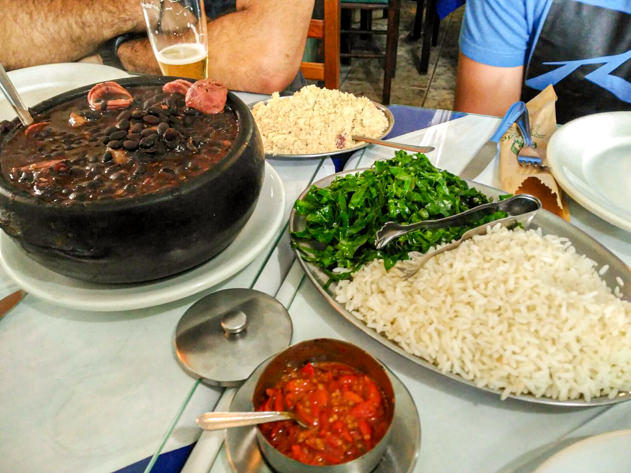
Where to eat and drink in Rio de Janeiro
Typical Brazilian dishes and drinks
The cuisine in Brazil is as diverse as the regions and cultures that are part of this vast country.
Feijoada is considered the most typical Brazilian dish. Traditionally served on Sundays, it includes black beans, various types of meat, rice, roasted manioc flour (farofa), sautéed cabbages and orange segments. Brazilians LOVE meat, particularly beef, pork and chicken, and the family barbecue or churrasco is another popular Sunday tradition. Other typical dishes include pão de queijo (cheese bread), salgados (fritters stuffed with cheese or meat), camarão na moranga (shrimp stew cooked in coconut milk and served in a pumpkin), picanha (hip steak), palmito (palm hearts) and milk pudding.
Given their Portuguese heritage, Brazilians love fish as well. Although the extensive coastline of the country provides a great abundance of fresh fish and seafood, the fresh waters of the Pantanal and the Amazon rainforest are home to other delicious fish such as dourado or pacú. Some popular Brazilian dishes featuring fish include cod fritters (bolinhos de bacalhau) and cod fillets.
In Brazil, you can also taste many tropical fruits such as papayas, limes, coconuts or mangoes. There are also other native fruits that are less known around the world, including jaboticaba, caju, atemoya, or the healthy açaí, an Amazonian berry full of nutrients.
There are a wide range of bars and restaurants you can find in Brazil, from the more informal botecos (botequins or pubs) and lanchonetes (small snack bars), to the more formal restaurants, por kilo and churrascaria rodizio, specializing in roast meat. While the restaurants por kilo are self-service buffets charge depending on how much your plate weights, the rodizios use a color system according to which each diner is provided with a small card that is placed on the green side if they want to continue eating and on the red side if they want to stop. The waiters place large spits on the table with different types of freshly roasted meat before slicing them on the plate. The most common cuts are filet mignon (sirloin steak), fraldinha (flank steak) and picanha (hip steak). I can’t help but remember the mouthwatering picanha that I used to eat at Fernando’s Café in Oxford (UK)! In the churrascaria rodizio, you will pay a fixed price for the buffet, but the dessert and drinks are not included.
When it comes to drinks, the most famous cocktail in Brazil is probably the caipirinha, which is prepared with lime, sugar, ice and cachaça (sugar cane liquor). On another hand, caipiroska is a variation of caipirinha made with vodka. The refreshing Brazilian beer is either served in a bottle (cerveja) or as draft beer (chopp). Tropical fruit juices, guaraná (a soft drink) and chá mate (mate) are also very popular throughout the country. Although Brazilians prefer cold drinks, the exception would be the cafezinho, a strong filter coffee that they drink very sweet and at any time of the day. You will find excellent coffee and magnificent blends in the major cities of Brazil.
How to eat on a budget in Rio
Looking for ways not to break the bank while you’re visiting Rio de Janeiro? Find some helpful tips below:
- Fixed meals (prato feito, prato de dia or P.F.): they are an affordable option for lunch and are usually offered by the cheapest restaurants in Rio.
- Restaurants by the kilo (buffets por quilo): they are also reasonably cheap and can be found throughout the city.
- Many botecos offer petiscos (snacks similar to Spanish tapas) that are quick and cheap. But beware as those appetizers, ranging from bread and olives to cold meats and cheeses, aren’t free. To avoid being charged, you must ask the waiter to remove the snacks.
- Get tasty and inexpensive tropical fruits and juices from street vendors or supermarkets.
- If you’re only eating one big hot meal per day, the churrascaria rodizios can be your best ally. These restaurants are perfect when you are very hungry since you can have a large quantity of meat and salads.
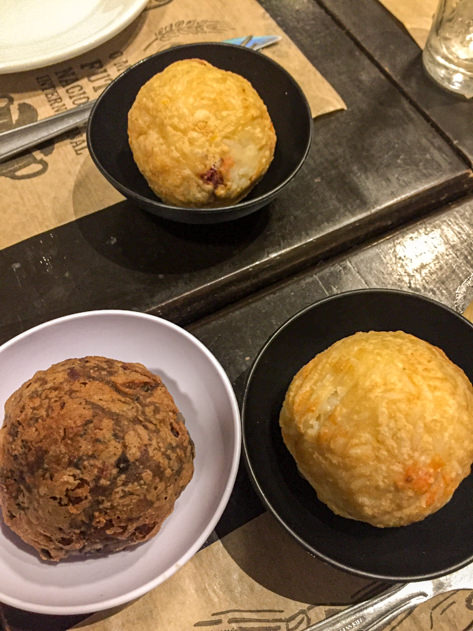
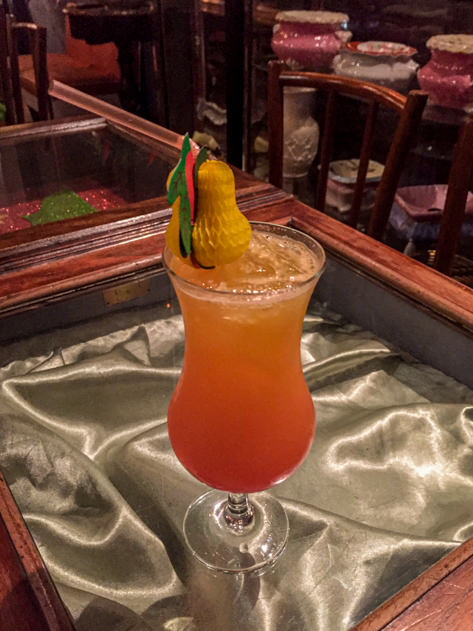
Cafeterias, bars, restaurants and clubs in Rio de Janeiro
Below you will find where we ate and hanged out during our stay in Rio:
- Confeitaria Colombo (Rua Gonçalves Dias, 32 – Centro): this Portuguese cafeteria / boteco founded in 1894 serves snacks, cakes and sweets. Formerly located in what was the center of Rio, it was a meeting point for intellectuals, artists and politicians. The lower gallery features tall mirrors while the upper one is illuminated by a beautiful art nouveau skylight. I ordered a restorative hot chocolate.
- Boteco da Praia (R. Visc. de Ouro Preto, 340 – Botafogo): we stopped by this bar near Botafogo beach to drink some Brahma beers with contrafilé (a traditional Brazilian beef cut) and fries.
- Bar restaurant Garota de Ipanema (R. Vinícius de Moraes, 49 – Ipanema): this is where the poet Vinícius de Moraes and his friend Antônio Carlos Jobim regularly met before composing the bossa nova hit ‘The Girl from Ipanema’.
- Hell’s Burguer (Rúa Teixeira de Melo, 21 – Ipanema): we ate burgers.
- Fogo de Chão (Av. Reporter Nestor Moreira, s/n – Urca): this was definitely the best dinner we had when we visited Rio, not only because of its excellent meat, but because of the breathtaking view of the Sugarloaf Mountain while we were drinking caipirinhas on the rooftop. Fogo de Chão is actually a famous Brazilian churrascaria rodizio chain that has expanded to North America and Europe.
- Os Imortais (R. Ronald de Carvalho, 147 – Copacabana): I met up for dinner here with a former Brazilian roommate and his girlfriend. We had petiscos (appetizers) such as bolinhos with dried meat and pumpkin, rice, feijoada and queijo cake. The evening turned out to be a lot of fun because the bar was broadcasting an Olympics soccer game, and every time the Brazilian team scored a goal, beers were on the house!
- Restaurante Alla Zingara (Rua Belfort Roxo, 231 – Copacabana): our last dinner in Rio was certainly a delicious one. We ordered bolinhos de bacalhau (cod fritters), churrasco misto (mixed barbecued steak), picanha nobre with rice and farofa.
- Bar do Mineiro (Rua Paschoal Carlos Magno, 99 – Santa Teresa): recommended by a local friend for the traditional feijoada); various locations across town.
- Delírio Tropical (36 A / 38 A – R. da Assembléia, 36-38 – Centro): recommended store by a local friend offering breakfasts, sandwiches and soups; various locations across town.
- Praia do Arpoador: yummy passionfruit and abacaxí (pineapple) caipirinhas!
- Cachaçaria Mangue Seco (R. do Lavradio, 23 – Centro): drinks in the lively district of Lapa
- Rio Scenarium Pavilhão da Cultura (R. do Lavradio, 20 – Centro): also located in Lapa, this is one of the largest samba clubs in Rio and a popular venue that hosts live bands on the ground floor. Bars and dance floors can be found on the upper floors.
In addition to all these places, you may want to explore Travessa do Comércio in the Old Town, flanked by bars and restaurants, as well as Baixo Gávea for lively nightlife. For the freshest fish, head to section ‘posto’ 7 in Copacabana beach. You’ll recognize the local fishermen thanks to their colorful boats lining in the sand.
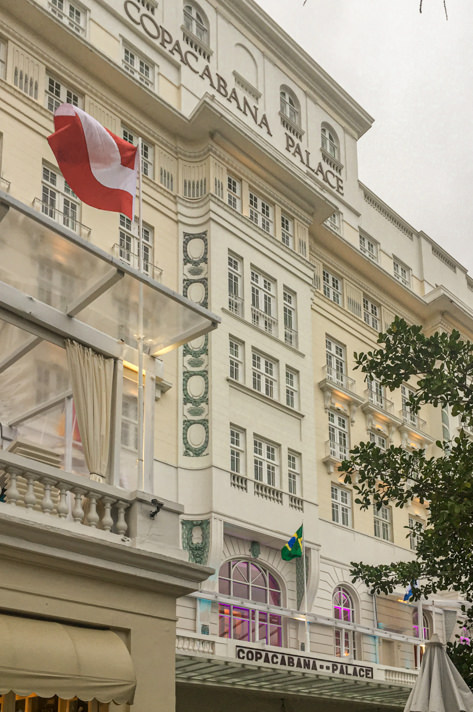
Where to stay in Rio de Janeiro
While we visited Rio de Janeiro during the Summer Olympic Games, we slept at an apartment in Copacabana near the beach that we had rented. Bear in mind that staying in a safe neighborhood such as Ipanema or Leblon is an important consideration to factor in.
If you’re looking for hotels in Rio de Janeiro, below are some accommodation options within various budget ranges, from low to intermediate and all the way to high-end:
- Low budget ($) – Atlantis Copacabana Hotel: although the air-conditioned rooms are small and simple, the location couldn’t be better as it’s located in a quiet and safe area, a short two-minute walk from the beaches of Ipanema and Copacabana. Breakfasts are generous and there’s a swimming pool on the rooftop. Other cheap hotels in Rio include Hotel Bandeirantes and Riale Imperial Flamengo.
- Mid-range ($$) – Marina Palace Rio Leblon: this is one of the best skyscraper hotels. It is within walking distance of Leblon’s restaurants and has spacious rooms. The upper floors offer good sea views. Alternative hotels within an intermediate budget include Mar Ipanema and Savoy Othon.
- Luxury hotel ($$$) – Copacabana Palace: ideally located along Av. Atlântica in front of the iconic Copacabana beach, the most luxurious hotel in Rio is currently celebrating 100 years of history. Its elegant suites featuring sea views have hosted princes, Presidents and movie stars. Other high-end 5-star hotels include Fasano, JW Marriott, Sofitel Rio de Janeiro Ipanema or Wyndham Rio de Janeiro Barra.
For further accommodation options in Rio, feel free to check the following local and global sites: Airbnb, Booking, Cama e Cafe, Flats in Rio or Hostelworld.
Remember that prices will literally skyrocket around New Year’s Eve and Carnival, so make sure to book your stay in Rio in advance!
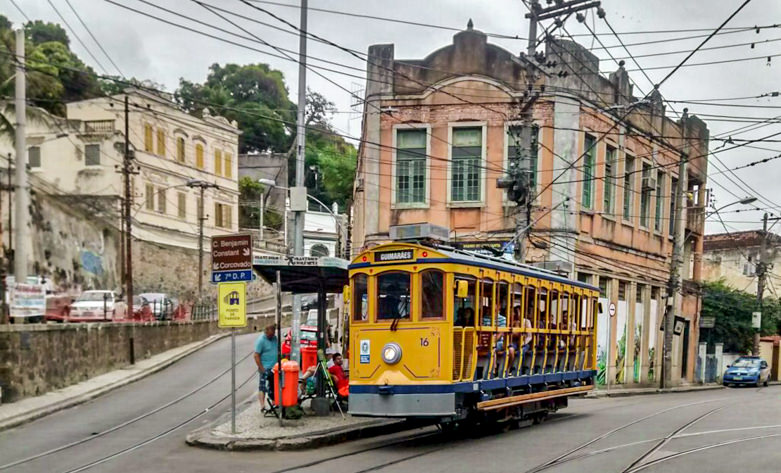
How to get around Rio de Janeiro (Brazil)
The city of Rio de Janeiro is equipped with an extensive public transport network, making it relatively easy to get around.
Below you will find different means of transportation:
- By plane: there are two airports in Rio. The domestic airport (Aeroporto Santos Dumont) is just one kilometer south of the city center and offers flights to São Paulo and connections to many other state capitals and important cities in Brazil. On the other hand, the Galeão international airport (Aeroporto Internacional Antônio Carlos Jobim) is located 15 km north, which might take you at least an hour to get there during rush hour. I flew to this international airport with Copa Airlines from Washington DC, connecting in Panama. Once I landed, my former roommate picked me up with a taxi and accompanied me to the apartment where my friends were staying. Alternatively, you can arrive to the airport and leave from there by taxi, bus, BRT, or subway.
- By bus: city buses that get around Rio are usually well indicated with their final destination in front of them. However you should avoid them at night given frequent thefts. There are also intercity buses (BRT- Rio or Bus Rapid Transit) that depart from the Rodoviária Novo Río terminal and circulate along various corridors (Transoeste, Transcarioca, TransOlimpico).
- By taxi: taxis in Rio are yellow and blue. Although not all of them are registered, those who are operate from the hotels or from the taxi stops in each neighborhood. Try to use registered taxis (radio taxis) and ask for advice at the reception desk in your hotel when in doubt. In addition to registered taxis, we also used Uber during our stay in Rio.
- By metro: it’s the best means of transportation around Rio as it’s safe, clean, reliable and cheap. We actually used the subway quite extensively during the Olympics. If you’re in the city suburbs, it is worth taking a taxi to the nearest metro station. Feel free to check out the interactive metro map.
- By ferry: hop on a ferry boat to explore Niterói on the other side of the Guanabara bay. The main ferry dock is located in Praça Quinze de Novembro.
- By cable car or train: most likely, the cable car (or bondinho) will be your preferred way of getting around to visit some of the top attractions in Rio, including the iconic Sugarloaf Mountain (Pão de Açúcar), the statue of Christ the Redeemer or the bohemian neighborhood of Santa Teresa. The main train station in Rio is Estrada de Ferro Central do Brasil or Estação D. Pedro II. The urban trains in the Supervia railroad network connect the Rio metropolis with the suburbs.
- By rental car or bike: it is also possible to rent a car, although driving Rio can be a real challenge, and especially dangerous at night. A popular option is to rent bikes to explore around Lagoa and the beaches of Copacabana, Ipanema or Leblon. On Sundays, the streets close to the beach are closed to traffic, making them ideal to ride your bike.
Map with the best things to do in Rio de Janeiro and around
In the detailed map below, you will find all the locations mentioned throughout this post. Save it for your easy of reference when planning your trip to Rio or exploring the city!
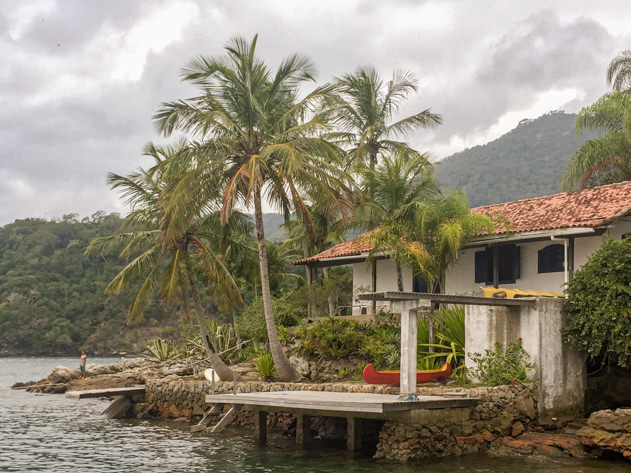
What to see and do beyond Rio de Janeiro, Brazil
The state of Rio de Janeiro is one of the most beautiful regions of Brazil. On one hand, its coastline is dotted with tourist resorts, beautiful colonial fishing towns and lined with white sand beaches. On the other hand, the mountainous inland is home to the former summer retreats of the Portuguese royal family. Many of the high slopes remain covered by the Atlantic Forest (Mata Atlântica) and protected by various national and state parks such as Itatiaia and Serra dos Órgãos.
Here are some destinations to visit outside of Rio:
- Angra dos Reis
- Búzios
- Ilha Grande
- Niterói
- Paraty
- Petrópolis
- Teresópolis
Angra dos Reis
This port town lacks charm, but it’s popular because it’s the departure point to Ilha Grande and Ilha da Gipóia. Back in the day, Angra dos Reis was as attractive as Paraty, but the expansion of the favelas has hidden the remains of its colonial past. The top attractions in town include a couple of churches built between the 15th and 16th centuries (Nossa Senhora do Conceição and Nossa Senhora do Carmo) and a colonial naval complex located about three kilometers north of the city towards Praia do Bonfim. For more information, you can read my post about our tropical getaway to Angra dos Reis and Ilha Grande.
Búzios
When French actress Brigitte Bardot first visited, this busy resort was a quiet fishing village on a peninsula lined with pristine beaches. Nowadays, the main street of Rua das Pedras as well as the surrounding cobblestone streets of this small town welcome elegant boutiques, upscale restaurants and charming pousadas (local accommodation typically run by families). Most visitors come to Búzios because of its fantastic coves and beaches. Some of the most popular are Praia João Fernandes, Praia João Fernandinho, Praia Azeda, Praia Azedinha, Praia da Ferradura, Praia Brava, Olho de Boi or Ferradurinha. The best way to get to know them is to either walk or rent a buggy.
Ilha Grande
Literally meaning big island, Ilha Grande is a jungle island without roads. Services are also very limited. However, the beaches such as Lopes Mendes and hiking trails are wonderful. The church (Igreja de Santana) from the 18th century is also worth visiting. From the capital of the island, Abraão, you can take a ferry or a rental fishing boat connecting you to Angra dos Reis. From there, you can easily reach Rio de Janeiro by bus.
Niterói
Located on the other side of the Guanabara Bay, the two most interesting attractions in Niterói include an imposing fortress built in the 16th century (Fortaleza de Santa Cruz da Barra), and a modern museum designed by the famous architect Oscar Niemeyer and inaugurated in 1996 (Museu de Arte Contemporânea de Niterói, MAC-Niterói). The best beaches in town are Camboínhas, Itaipu and Itacoatiara, although the sunset views from the MAC museum or from Charitas beach with the silhouettes of Corcovado and Sugar Loaf are unbeatable!
Paraty
Welcome to one of the most photographed colonial cities on the Brazilian coast. Declared a UNESCO World Heritage Site, it was founded by the Portuguese in the 16th century and later became a prominent port for shipping gold to Europe. Its charming whitewashed churches (the main ones being Nossa Senhora dos Pardos Libertos, Nossa Senhora do Rosário e São Benedito, Nossa Senhora dos Remédios and Nossa Senhora das Dores) and terracotta roofs contrast with the lush forest that covers the mountains and the emerald waters that bathe the city’s dock. Other attractions in Paraty include a former prison (Casa de Cadeia) and a fort that now houses a museum (Forte Defensor Perpétuo). Every winter, the city hosts an internationally recognized literary (Festa Literária Internacional de Paraty-FLIP).You can stay in a charming pousada in Paraty while exploring the nearby area. Paraty is surrounded by beautiful beaches that are popular among surfers (Paraty-Mirim, Praia do Cepilho, Praia do Meio) and small towns such as Trindade.
Petrópolis
This city surrounded by the imposing Serra dos Órgãos was founded in 1843 as a summer retreat by Emperor Pedro II. Linked to Rio by train, a large part of the city was designed by the German architect Julius Friedrich Köhler and wealthy cariocas settled here. Petrópolis is filled with magnificent mansions and palaces such as the Imperial Museum (Palácio Imperial and former residence of the royal family; make sure to check out the Crown jewels, the scepter and the State Room), Palácio Rio Negro, Palácio de Cristal (now used as an exhibition hall that also hosts shows and cultural events), Catedral de São Pedro de Alcãntara (built in French Gothic style), Casa de Santos Dumont known as A Encantada (turned into a museum displaying everyday objects of the famous Brazilian aviator and inventor) and Quitandinha (a casino built in 1944 in Norman style then converted into a hotel and private residences).
Teresópolis
Located at the highest point of the State of Rio de Janeiro and close to Serra dos Órgãos, this mountain city was the favorite summer retreat of Teresa Cristina de Borbón y Dos Sicilias, Empress consort of Pedro II. Teresópolis comes to life on the weekends with the craft fair known as Feirarte taking place in Praça Higino da Silveira, with over 700 stalls. Another popular attraction is Arabotânica, displaying more than 3,000 varieties of orchids.
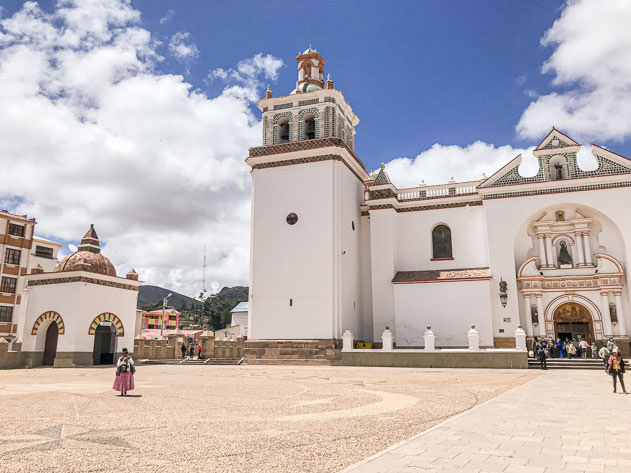
Discover more destinations in Latin America!
How did you enjoy reading about the 9 top things to do in Rio de Janeiro? I truly hope that this extensive travel guide helped you plan your next trip and inspired you to explore this fascinating Brazilian city. Feel free to leave your questions and comments below. I look forward to hearing your thoughts!
***
✈️ Curious to know where I’ll be traveling next? ✈️
Stay tuned by following me on social media (Facebook, Instagram, X) and subscribe to my newsletter for regular updates!
In the meantime, safe travels around the world!
***
| GET READY FOR YOUR NEXT TRIP! |
|---|
| Browse my travel resources page to plan your upcoming trip. |
| Feeling adventurous? Book any outdoor activities worldwide with Manawa! |
| Get medical or health insurance via SafetyWing for extra peace of mind. |
| Looking for sports equipment? Feel free to browse my Decathlon profile for inspiration. |
| Use the Anaya Touring or Lonely Planet travel guidebooks to plan your trip. They’re really comprehensive and helpful! |
| Create travel memories you’ll never forget! Book things to do, attractions and tours around the world with Get Your Guide. |




